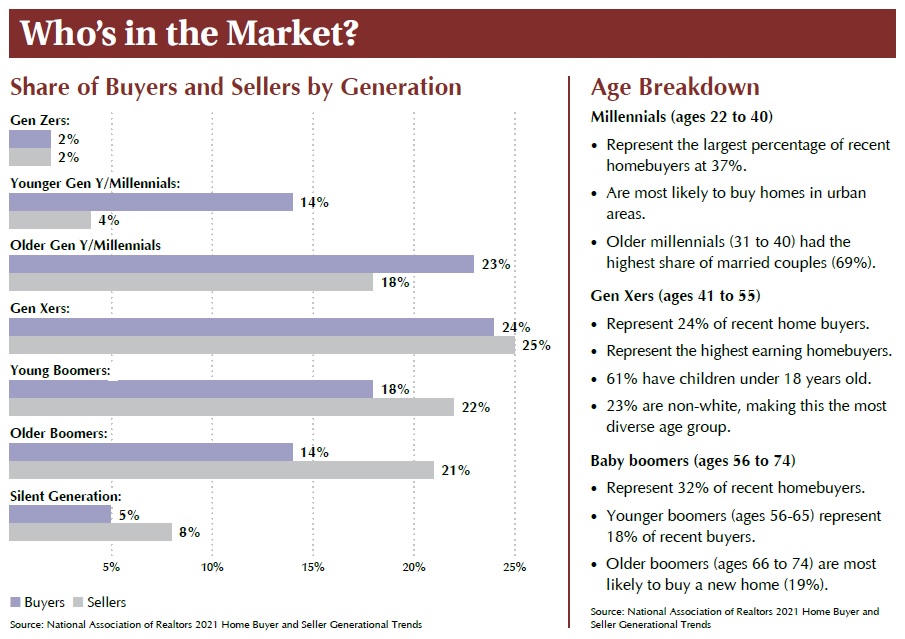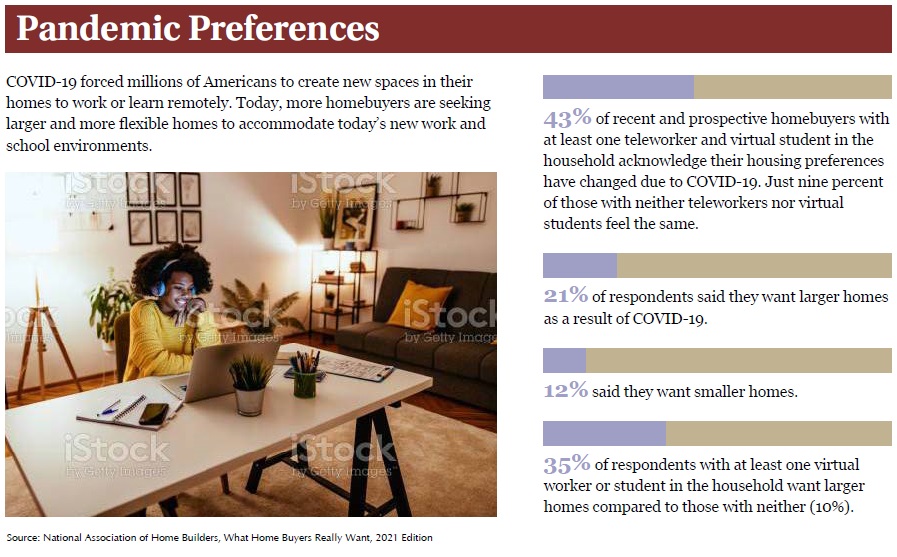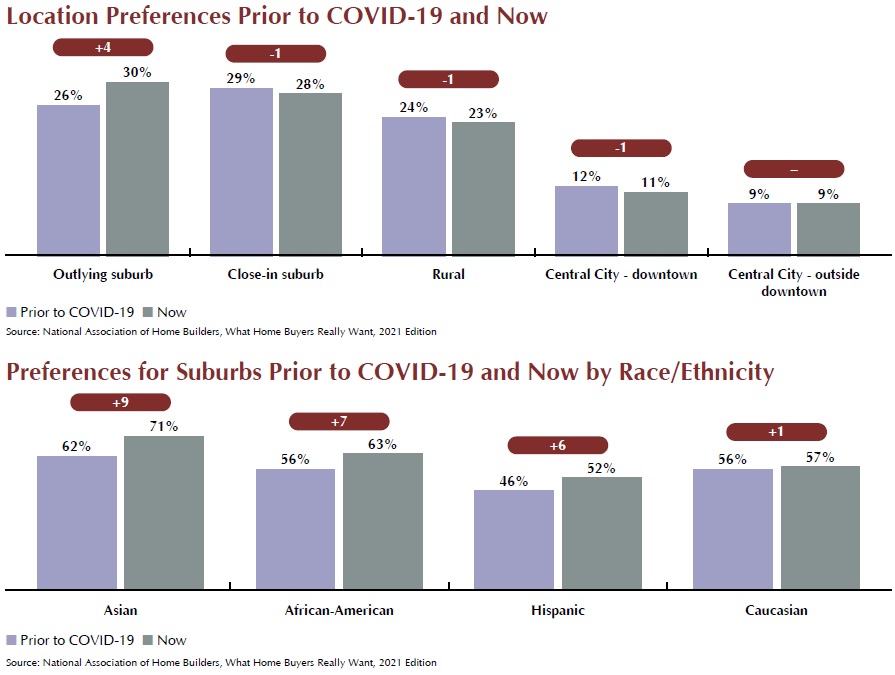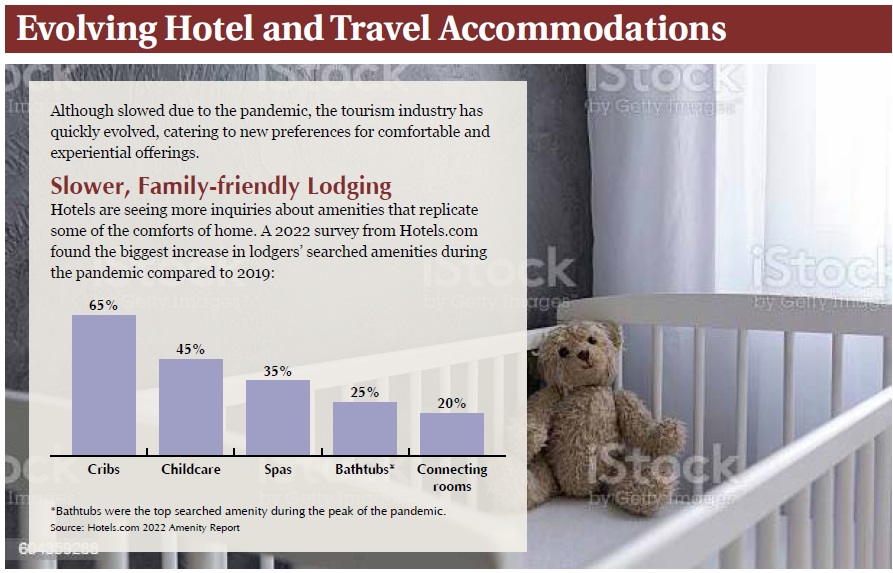Preferences for living and lodging arrangements have dramatically changed since the onset of COVID-19. As covered in the 2021 Outlook issue of Club Trends, many Americans have moved away from urban areas in favor of more spacious living. Hotels, too, had to adapt to fewer travelers and higher hygienic standards. Two years later, these trends continue to shift as consumers’ preferences change and society enters a new normal.

Where Buyers Want to Live
Most homebuyers (62%), regardless of age, consider neighborhood quality the top factor influencing the location of their new residence. However, there are some stark generational differences clubs should know when it comes to homebuying.
The only age group that values a neighborhood characteristic more than quality is young millennials, prioritizing convenience to jobs.
The biggest difference in preferences between older groups (those 66 and older) compared to younger age groups is convenience to health facilities. These groups, including younger boomers (19%), older boomers (28%) and traditionalists—those ages 75 to 95—(31%) factor it more than Gen X (9%), older millennials (8%) and younger millennials (10%).
Older buyers tend to value convenience to shopping as well, as the average of those ages 56 to 95 factoring it is 34%, compared to just 27% of those ages 22 to 55.
For buyers under 65 years old, the top desire to buy is to have a home of their own. However, for buyers over 66 years old, their top desire is to be closer to friends and family, followed by the desire to own a smaller home.
Source: National Association of Realtors 2021 Home Buyer and Seller Generational Trends

Suburb Interest Grows
Americans are seeking more space for their homes. Among recent and prospective homebuyers, a preference for outlying suburbs has increased by four percent (26% to 30%), compared to prior to the pandemic. This four-point bump represents the largest shift in interest compared to more urban and rural areas.

Sorted by race and ethnicity, communities of color more heavily seek suburban areas than before the pandemic. Caucasians’ preference for suburbs only increased by 1%.
Luxury Home Preferences
The luxury market has been affected by key pandemic-related trends. Here are four top affluent homebuying trends according to the Institute for Luxury Home Marketing:
Flex Space
The pandemic highlighted the need for space for a variety of purposes. A room’s versatility is becoming more important for buyers.
Square Footage
It is still important for homes to have ample space for the multitude of new purposes they are now expected to have, especially for visiting guests and family.
Fast Connectivity
While not always in the owner’s control, fast internet is critical in today’s world as virtual work and learning become normalized.
Better Air Quality
Superior air purification systems can be a selling point for realtors in the luxury market as buyers seek their hygienic benefits.

5 Big Hotel Trends
- Smart Rooms. Hotel amenities are becoming increasingly digital. Portable streaming devices like the Amazon Fire Stick or the platform Enseo, which allows guests to log into their streaming accounts and automatically log out upon checkout, are in demand as travelers seek to watch TV and movies curated to their preferences. Additionally, voice-activated controls to request house- keeping and tablet-based room controls offer convenience.
- Going Green. Hotels continue to emphasize their sustainability. LEED Certification, which measures the eco-friendliness of a building, can be an attractive quality to travelers. Many hotel chains are also phasing out the use of small, plastic-packaged toiletries and introducing recycling and compost bins to benefit the environment.
- Alternative Accommodations. Several new lodging concepts have emerged, enhancing the lodging experience. Coliving and coworking spaces allow travelers, particularly solo travelers, to mingle, socialize and work in a new destination. A new concept, “hometels,” offers accommodations that fill the gap between luxury hotels and home rentals. One company in the space, Sonder, is already valued at more than $1 billion. Other brands in this area, like Life House, occupy mostly historic buildings that reflect the stories and culture of its surrounding community.
- Traveler Preferences. More travelers seek experiences over things, opting for longer and pricier vacations. Additionally, work has mixed with leisure, dubbed “bleisure,” in which individuals extend business trips to enjoy a traditional vacation. New appeals like medical tourism for those seeking procedures done in low-cost regions, health and wellness tourism, staycations, food tourism and even coffee tourism for travelers seeking high-quality coffee, have all carved niches for travelers.
- Hotel Design. Trends like hyperlocal design that reflects the unique culture of the community, mixed indoor and outdoor spaces, social areas and green spaces are redefining the physical character of lodging.


